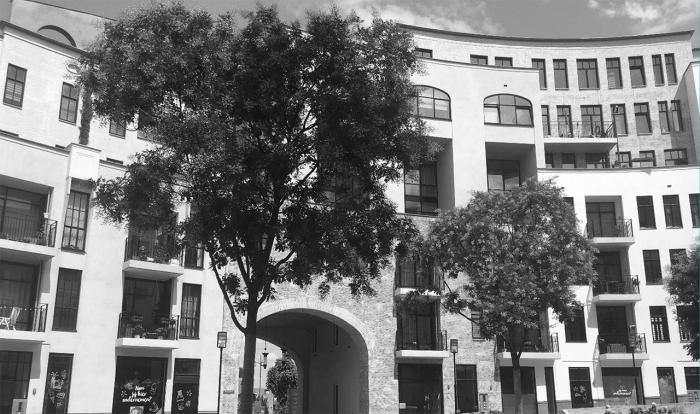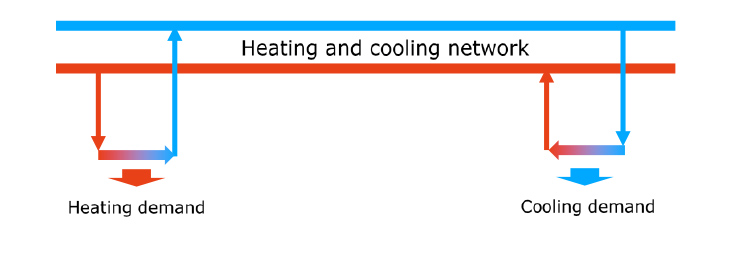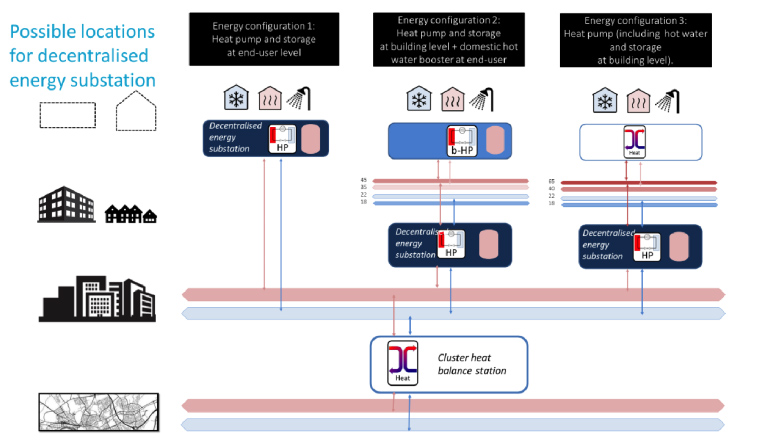
Details
Solution type
The Delft University of Technology, municipality of Amsterdam together with a number of green innovation partners worked together in the “KoWaNet” project in order to make the heating and cooling of Dutch buildings carbon neutral. A flexible decentralized and open heating and cooling exchange network at low temperatures has been analysed at several locations.
The Dutch Climate Agreement stipulates that, in 2050, all buildings will be using sustainable energy. The very common energy source, natural gas is being phased out in The Netherlands. This creates a large demand for alternative methods and sources of heating.
The ‘KoWaNet’ project has investigated flexible and open heating and cooling networks (DHC) as a feasible energy concept in the Netherlands. The project was performed by project partners EnergyGO, the Technical University in Delft and the city lab Amsterdam.
The technical and financial design of KoWaNetten or the 5th Generation Heating and Cooling Networks initiates from the principle of a match (exchange) between the supply and demand of heat and cold. The network uses decentralised production and storage techniques to optimize its design and to minimalize the need for external energy.
The essence of KoWaNetten/low-temperature heat networks is:
- The demand for heating and cooling between buildings can be exchanged;
- Local low temperature sources up to 50°C, can be used for the low temperature demand;
- The network is demand-driven and decentralised. The temperature needed is produced as close to the end-user as possible;
- There is synergy between the thermal network and the electricity network;
- All local sources of (very) low heat can be used to the max, to minimise the input of high-quality energy sources (e.g. electricity) and, foremost, the use of fossil fuel sources.
Technique developed
A KoWaNet, uses a network temperature as low as possible, that in principle never exceeds the available heat source. Increasing or decreasing the temperature is decentralized, through heat pumps at the end user’s location (dwelling or building).
In a KoWaNet, the decentralised production of heat or cold, on the scale of the building, can function simultaneously as a source of heating or cooling, by using a 2- pipe network. A medium-temperature or high-temperature network using centralised production needs a 4-pipe system to deliver both cooling and heating.


Heat sources providing a higher temperature are allowed. In principle, the temperature of the heat pipe could be higher. Through passive cooling that may return to the heat pipe, the high-temperature residual warmth mixes with a low-temperature source. This means that the higher temperature source cannot be used sufficiently (energy destruction). Besides, the heat pump system for heating must be designed and calibrated, so that the return in the cold pipe remains below a previously determined temperature, to guarantee direct passive cooling. If a significant amount of heat is available at a high temperature (supply > demand), the temperature level that supports passive cooling is not optimal. In that case, it is advisable to cool actively and heat passively.
The heat and cold pipes of the system are connected to a decentralised energy substation, that upgrades the temperature to the level needed. The decentralised energy substation consists of one or more heat pumps, exchange vessels, an exchange station connecting the network, distribution pumps and (decentralised) control management, connected possibly to an intelligent controller and additional thermal storage.
Figure 3 shows the possible locations:
- Configuration 1: Energy plant (Heat Pump + storage + controller) at the end-user.
- Configuration 2: Energy plant (Heat Pump + storage + controller) at building level.
- Configuration 3: Energy Plant (Heat Pump + storage + controller) at building level,
- using a 4-pipe distribution grid at building level, with high-temperature heat (> 65°C).
The choice depends upon considerations of energy consumption, costs and space available

Economy and ownership
The project has also been looking at methods and models for financing a cold heating grid together with the process of creating a network, the ownership, governance as well as legal matters.
The model for financing was made for calibrating several scenarios’ using varying energy prices, interest rates and the phased adding of connections to the network. It is also useful when comparing different kinds of networks. This model also focuses on maintenance- and capital costs of the annual depreciation of all parts for each stakeholder. In this model, the technical life-span/replacement costs are taken into account, inflation, interest, costs of capital a.o. are not.
Saskia Müller, Stichting (Stadslab Circulair Buiksloterham) e-mail
Marcel Elswijk, (EnergyGO) e-mail
- Renewable Energy
- Heating
- Cooling
- Case studies
More info
Read more at www.kowanet.nl/en
Results (technical handbooks, decision support tool etc.)

